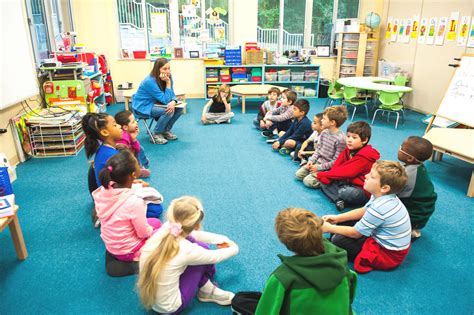Building Classroom Community

Creating a strong and inclusive classroom community is essential for fostering a positive learning environment. It lays the foundation for student engagement, collaboration, and overall academic success. In this comprehensive guide, we will delve into the strategies, activities, and practices that educators can employ to build a vibrant and supportive classroom community, complete with real-world examples and expert insights.
Cultivating a Sense of Belonging

At the core of a thriving classroom community is a sense of belonging and inclusion. Students should feel valued, respected, and accepted for who they are. Here’s how educators can cultivate this essential aspect:
Get to Know Your Students
Taking the time to understand each student’s unique background, interests, and learning style is crucial. Mrs. Taylor, a veteran elementary school teacher, begins her year by conducting individual interviews with her students. She asks about their hobbies, favorite subjects, and even their dreams. This simple yet powerful approach helps her tailor her teaching methods to meet the diverse needs of her class.
Celebrate Diversity
Classrooms are microcosms of society, encompassing a rich tapestry of cultures, ethnicities, and identities. Educators should embrace this diversity by incorporating it into their curriculum and daily routines. Mr. Ahmed, a high school history teacher, dedicates a week to exploring the histories and contributions of various ethnic groups. He invites guest speakers, organizes cultural exchanges, and encourages students to share their heritage with the class.
| Diversity Celebration Week | Activities |
|---|---|
| Day 1 | Cultural Food Fair: Students bring dishes representing their heritage. |
| Day 2 | Guest Speaker: An immigrant entrepreneur shares their journey. |
| Day 3 | Art Showcase: Students create and display artwork inspired by their culture. |
| Day 4 | Language Exchange: Students teach each other basic phrases in their native languages. |
| Day 5 | Reflection and Discussion: A thoughtful wrap-up session to discuss the week's learnings. |

Establishing Positive Relationships

Strong relationships between teachers and students are the bedrock of a supportive classroom community. Here’s how educators can nurture these connections:
Open Communication
Encourage students to voice their thoughts, concerns, and ideas. Ms. Johnson, a middle school science teacher, starts each class with a “Thought of the Day” activity. Students anonymously write down their thoughts on a slip of paper, which she reads and discusses with the class. This practice not only fosters open communication but also helps her gauge student emotions and address any potential issues.
Positive Reinforcement
Recognize and reward positive behaviors and achievements. Mr. Garcia, an art teacher, uses a “Catch ‘Em Being Good” strategy. He surprises students who demonstrate kindness, creativity, or perseverance with small tokens of appreciation, such as stickers or hand-written notes. This approach boosts morale and motivates students to continue exhibiting positive behaviors.
Collaborative Problem-Solving
Involve students in finding solutions to classroom challenges. Mrs. Williams, a kindergarten teacher, established a “Peace Corner” in her classroom. When conflicts arise, students can voluntarily use this space to discuss and resolve their issues. She guides them through the process, teaching valuable conflict resolution skills.
Nurturing Social-Emotional Skills
A key aspect of building a classroom community is developing students’ social and emotional intelligence. These skills enable them to navigate relationships, manage emotions, and make responsible decisions.
Emotional Awareness and Regulation
Help students identify and express their emotions appropriately. Ms. Lee, a high school counselor, facilitates regular emotional check-ins. She guides students through a simple exercise where they reflect on their emotions and learn to recognize their emotional triggers. This practice enhances their emotional intelligence and self-awareness.
Empathy and Perspective-Taking
Foster empathy by encouraging students to see situations from different perspectives. Mr. Anderson, an English teacher, assigns literature circles where students discuss books from various genres. After each discussion, he prompts them to reflect on how the characters’ perspectives influenced their actions and decisions. This activity not only enhances their literary analysis skills but also promotes empathy and understanding.
Conflict Resolution
Teach students effective strategies for resolving conflicts peacefully. Mrs. Rodriguez, a middle school math teacher, integrates conflict resolution activities into her lessons. She uses real-life scenarios related to math problems to teach students how to approach disagreements calmly and find mutually beneficial solutions.
Promoting Collaboration and Teamwork
Collaboration is a vital skill for success in the modern world. Educators can facilitate collaborative learning environments through various strategies and activities.
Group Projects
Assign group projects that require students to work together toward a common goal. Ms. Chen, a biology teacher, organizes a research project on environmental issues. Students are divided into groups and tasked with researching, presenting, and proposing solutions to a specific environmental challenge. This project not only enhances their research skills but also teaches them the importance of collaboration and teamwork.
Peer Teaching
Encourage students to teach and learn from each other. Mr. Taylor, a language arts teacher, implements a peer tutoring program. He pairs advanced students with those who need extra support. This practice not only boosts the confidence of the tutors but also provides a unique learning experience for the tutees.
Classroom Games and Activities
Incorporate fun and interactive games that promote teamwork. Mrs. Smith, a physical education teacher, organizes a weekly “Team Challenge” day. She sets up a series of obstacle courses and challenges that require students to work together to complete them. These activities not only build teamwork skills but also foster a sense of camaraderie.
Incorporating Student Voice and Choice

Empowering students to have a say in their learning journey is a powerful way to build a classroom community. Here’s how educators can incorporate student voice and choice:
Classroom Decision-Making
Involve students in decision-making processes. Mr. Johnson, a music teacher, allows his students to vote on the songs they will learn and perform. He also seeks their input on classroom rules and consequences, fostering a sense of ownership and responsibility.
Student-Led Conferences
Encourage students to take an active role in their academic progress. Ms. Garcia, a middle school teacher, organizes student-led conferences. During these conferences, students present their work, reflect on their progress, and set goals for the future. This practice not only motivates students but also provides a unique opportunity for parents to engage with their child’s learning journey.
Choice Boards and Menus
Offer students choices in their learning activities. Mrs. Anderson, an elementary school teacher, uses choice boards for reading activities. She creates a board with various reading strategies and activities, allowing students to choose the ones that interest them the most. This approach not only engages students but also caters to their individual learning preferences.
Conclusion: A Community of Learners
Building a strong classroom community is a transformative journey that benefits both educators and students. By cultivating a sense of belonging, establishing positive relationships, nurturing social-emotional skills, promoting collaboration, and incorporating student voice, educators can create a vibrant and supportive learning environment. Remember, every classroom is unique, and these strategies should be adapted to fit the needs and personalities of your students.
How can I ensure my classroom community remains inclusive and welcoming for all students?
+Creating an inclusive environment involves ongoing efforts. Regularly assess your classroom culture and address any potential biases or microaggressions. Incorporate diverse perspectives in your curriculum and promote open dialogue about different identities and experiences. Encourage students to celebrate their uniqueness and appreciate the diversity of their classmates.
What are some strategies to build positive teacher-student relationships quickly at the beginning of the school year?
+Start with icebreakers and get-to-know-you activities. Share personal stories and experiences to humanize yourself in the eyes of your students. Show genuine interest in their lives and passions. Celebrate their achievements and provide constructive feedback to help them grow. Building positive relationships takes time, but consistent effort pays off.
How can I promote collaboration among students who have different learning styles and abilities?
+Diversity in learning styles can be an asset. Assign group roles that capitalize on each student’s strengths. Provide clear guidelines and expectations for group work. Encourage students to support and learn from one another. Offer various collaboration tools and strategies to accommodate different learning styles, such as visual aids, hands-on activities, or digital collaboration platforms.



